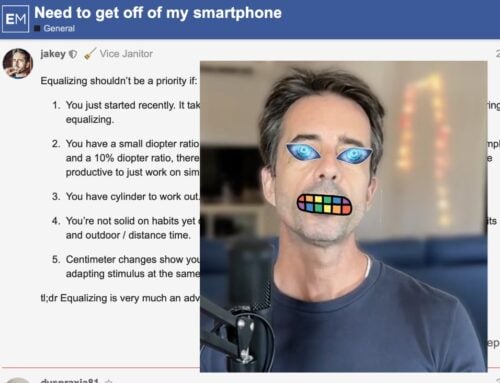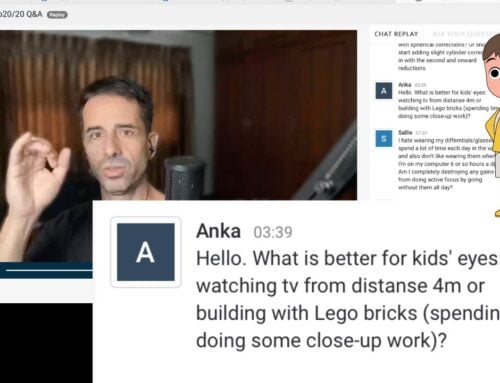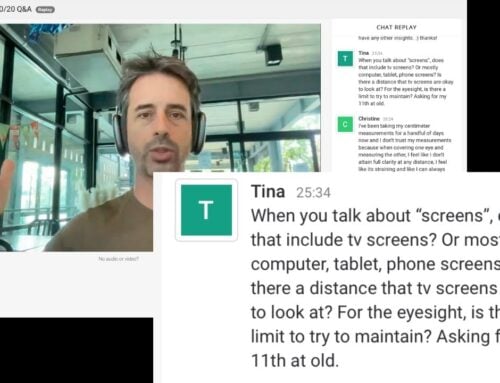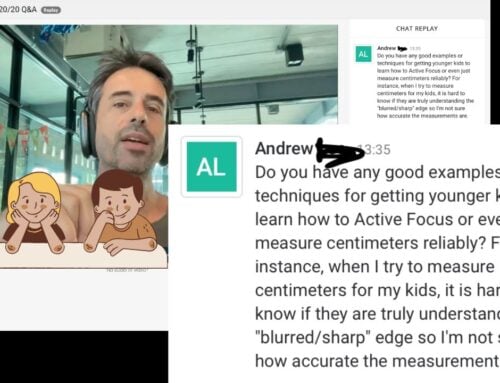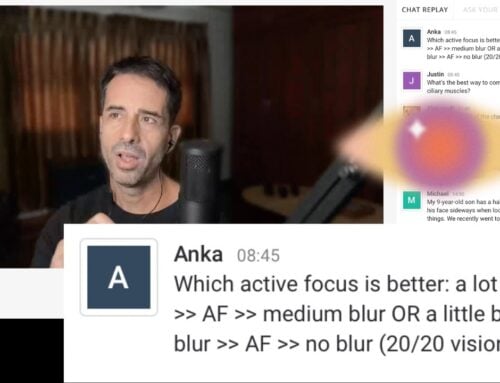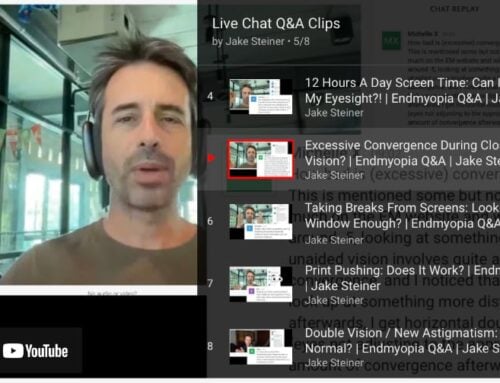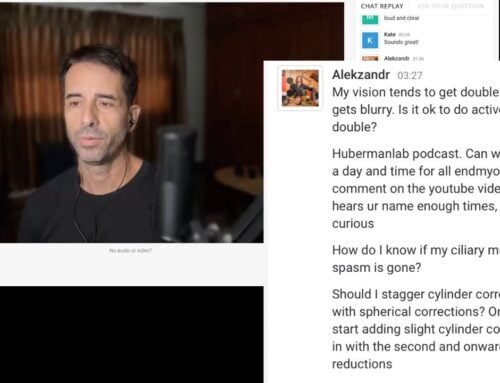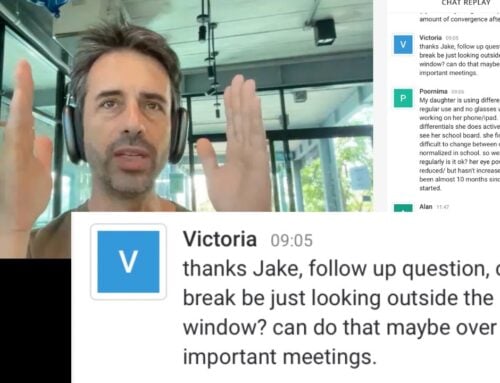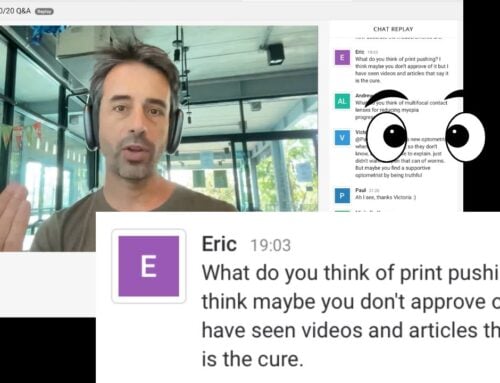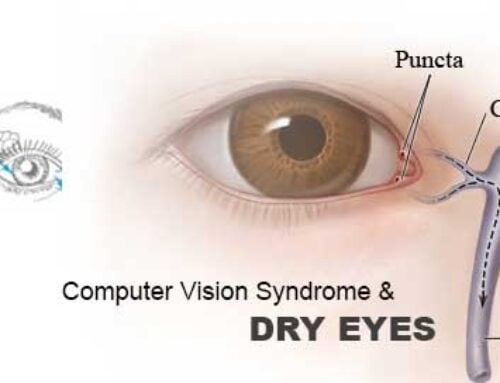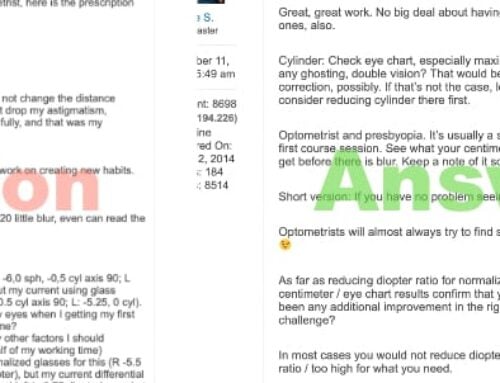This has to be the #1 question I get in e-mails.
How fast, Jake!
Do it, do it right meow!
Here’s the thing.
There are two answers to the question of how fast vision improvement can happen.
The answer that people are looking for, is an answer to what might be not the perfect question. But in the interest of not being annoyingly Buddhist proverb-ey, I’ll give you all the optional comments here.
Let’s use a question from the forum today to cover the “how fast to improve my vision” question.
It also deals with prescription reductions (two for one!), and it’s a bit more of a helpful question to ask, rather than just “how long” by itself. It’s actually a good question, but it also helps out to cover the several “how fast Jake” e-mails from today.
Gerdt posts:
I understand to take the time in prescription change (4-6 weeks minimum) but i do not understand when i should change it.
My first normalized was -1.5 (allowed me to see 20/50), after 4 months i improved to 20/40, so i changed prescription to -1,25 to see 20/50 again. After another 4 months i improved again to 20/40. Since then i got a little bit stuck and i have not imroved for a quite bit of time (3-4 motnhs plateu, but seeing double image). Now i do not know should i keep going with the -1,25 to see better than 20/40 or change again -0.25 lower (-1 prescription) to see 20/50? Generalized:
How long should i keep going with a certain normalized prescription value until i am down to stable 20/40, 20/30, 20/25 or even 20/20 before changing prescription again?
So here’s the deal, my answer to Gerdt’s question:
So, 4-6 weeks minimum between changes.
For regular changes with ongoing vision improvement, figure it this way. Average annual improvement (after the initial reduction), about 1 diopter (0.75 to 1.25). Comes out to 0.25 diopters every three months.
Reality of course is that the biology isn’t linear, and our environment changes (winters for example, possibly slower rate of improvement, and often a nice jump after spring).
Whenever you plateau like you are now, give it an extra month at wherever there’s no notable change, and then take a step down regardless. At those times it’s a great idea to change whatever habits you have in place. IE change where you take a walk, break routines, however many of your vision related habits you can shake up, the more effective breaking through the plateau tends to be.
And remember with double vision. It’s all about giving the brain time to resolve the image. So it’s not about “blinking” it clear, but just gazing at the image for a short while.
Make sense? Tl;dr?
0.75 to 1.25 diopters per year.
That’s how fast.
Anybody claiming anything faster, is selling you a nice bridge in Alaska.
In reality you have to account for biology (there are clues to genetic differences suggesting different degrees of susceptibility to eyeball axial length change). You have to account for lifestyle. You have to account for environment.

But for most people, most of the time, that’s the range.
Call it 1 diopter a year.
And here’s why that’s the right answer to what could be the less intriguing question on the vision improvement speed topic.
Think about travel.
Do you ask, how long does it take to get there? Or do you plot interesting overland train rides, and places where you might meet interesting travelers and hear traveler stories? Do you enjoy waking up somewhere unfamiliar in the morning, and taking a morning walk through lots of winding, unfamiliar streets?
Or maybe you just want to arrive at the resort and be done with it.
Or think about gym / weightless / fitness.
Is it about some specific point in time when you’re … “fit”? Or do you get into the gym or running habit, do you enjoy the body changes, the milestones, the runs, the competition, the experience?
Maybe you’re just waiting for that one specific day that you look in the mirror and go, yup. Done.
Is there a single point in time, sometime in the future?
Do we have to be waiting for that point in time, not enjoying the current adventure of process and discovery? Is improvement the goal, or is it some number on a chart on the wall?
Consider this.
The difference between -6 diopters and -4 diopters is WORLDS.
Between the curvature of the lens, lens thickness, close-up vision without the lenses, the thickness of contacts, the weight of glasses, the perception of color and distance, innumerable details are quite different.
Going from -6 to -4 is like taking the train up the Alps through Italy.
Pretty decent option.
It’s not arriving at the hotel. Granted.
But that train doesn’t suck, either. Besides, what is going to be so exciting after you’re done arriving? You’ll be needing something new to feed your brain anyway.
Cheers,
-Jake





